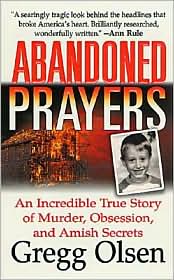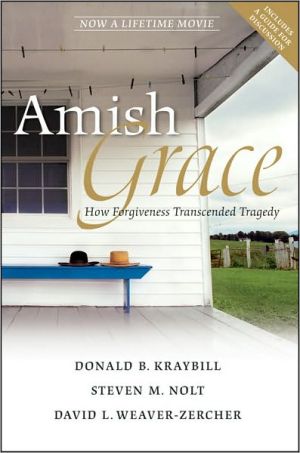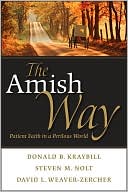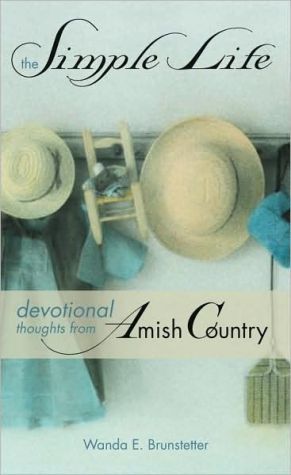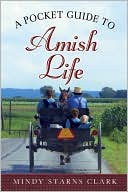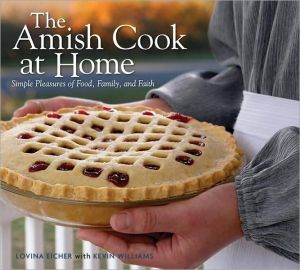Abandoned Prayers: An Incredible True Story of Murder, Obsession, and Amish Secrets
On Christmas Eve in 1985, a hunter found a young boy's body along an icy corn field in Nebraska. The residents of Chester, Nebraska buried him as "Little Boy Blue," unclaimed and unidentified— until a phone call from Ohio two years later led authorities to Eli Stutzman, the boy's father.\ Eli Stutzman, the son of an Amish bishop, was by all appearances a dedicated farmer and family man in the country's strictest religious sect. But behind his quiet façade was a man involved with pornography,...
Search in google:
"A riveting and deeply disturbing chronicle of true crime. Olsen has done a superior job." -Cleveland Plain DealerOn Christmas Eve in 1985, a hunter found a young boy's body along an icy corn field in Nebraska. The residents of Chester, Nebraska buried him as "Little Boy Blue," unclaimed and unidentified-until a phone call from Ohio two years later led authorities to Eli Stutzman, the boy's father.Eli Stutzman, the son of an Amish bishop, was by all appearances a dedicated farmer and family man in the country's strictest religious sect. But behind his quiet façade was a man involved with pornography, sadomasochism, and drugs. After the suspicious death of his pregnant wife, Stutzman took his preschool-age son, Danny, and hit the road on a sexual odyssey ending with his conviction for murder. But the mystery of Eli Stutzman and the fate of his son didn't end on the barren Nebraska plains. It was just beginning..."Among the top true crime books published. Once picked up, it's hard to put down." —New Philadelphia Times Reporter"A superior true crime account that should not be missed." —Jack Olsen, author of Doc and I: The Creation of a Serial Killer
CHAPTER ONE December 24, 1985\ It was time for a haircut. Chuck Kleveland felt the annoying fringe of sandy hair crowding his ears and knew that with the approaching holidays he couldn’t let it go much longer. He kissed his wife, Kathy, swallowed his last bit of coffee, and put his shotgun in the gun rack of his ’83 Ford pickup. He planned to do a little hunting on the way to the barber in Hebron.\ It was 10 A.M., Christmas Eve.\ Kleveland, age 44, pulled out of the driveway of his ranch-style home in Chester, a dozen miles due south of Hebron. Chester, a tiny town whose skyline consists of a pair of grain elevators, is within spitting distance of the Nebraska–Kansas state line. To nonresidents, the town doesn’t seem like much, except maybe a good place to gas up or pick up a pack of cigarettes.\ Hebron and Chester used to be the kind of nice, friendly prairie towns where people spend their entire lives. Now they are the kind of towns young people abandon for careers in Omaha—or, if they can bear to pull away from the heart and soul of their parents’ and grandparents’ birthright, they move away even farther, to one of the coasts. Family-owned farms have grown more scarce; a few are fallow.\ Kleveland was of the generation—the last generation, some claimed—that still envisioned a good life on the bleak prairie of rural Nebraska. Although he had studied business at the university in Lincoln and lived in New York for a couple of years, Kleveland had returned to Chester, where he owned and ran Foote’s Truckstop in Chester and a similar business in Kearney, a couple of hours to the west.\ Kleveland drove east on Harlan Street before turning north on U.S. 81, a trace of snow mottling the road’s shoulder. He could have stayed on 81 and been in Hebron in fifteen minutes, but instead he made a quick right on a farm road bordering a local corn grower’s spread. Kleveland knew the field was a good place to find orange and gold ring-neck pheasants—stray grain kernels littered the ground and provided fodder for game fowl. His wife had another Christmas menu planned, but she would make room for the pheasants on the holiday table. Kathy Kleveland liked the way her husband fixed them.\ He took a left and drove north, squinting as he scanned the slightly hilly terrain. The icy earth bristled with hard, dead cornstalks, their frosty surfaces sparkling in the cold, even light. No birds were startled into flight by the noise or movement of the cherry-red pickup.\ The jangly sound of steel guitars from a country music radio station broke the bleakness of the morning.\ From the corner of his eye Kleveland saw a small bit of blue against the brown and gray field. The color was out of place in the dull winter landscape. He braked to a stop and backed up to get a closer look. When he stepped from the cab, the 30-below-zero wind chill slashed through his parka. Standing at the edge of the roadside drainage ditch, he looked into the field and immediately spotted what had attracted his attention. Partially hidden in a brambly nest, the spiky remnants of yard-tall prairie grass, was a dead body.\ It appeared to be a little girl dressed in a blue, one-piece blanket sleeper. Her hand was glazed over with ice and her body lay flat and stiff on the frozen ground. The child’s dark hair was clean and neatly parted, but her head was tilted back, so Kleveland couldn’t quite make out her face. From his vantage point on the roadside, it appeared that the child’s hand had been placed over her heart.\ Kleveland had seen enough. He did not move closer to the small corpse, which lay only fifteen feet from the roadside. He didn’t want to mess up any footprints or other evidence, and he sure as hell didn’t want to be part of any evidence. He studied the field, then looked down the length of the dirt road. He wondered if whoever had left the child was still around, watching, as he walked back to his still-running pickup. Picking up the mike of his commercial two-way radio, installed to communicate with his truck-stop fleet of tank wagons, he called his bookkeeper in the office at Foote’s.\ “Joyce?” His voice was steady. “I think I found a dead body out here. Call the sheriff.” He stopped short of giving the exact location. There were plenty of police scanners in the small, neatly painted homes in Thayer County. Kleveland knew that if word got out—and in Chester and Hebron one could bank on that—bystanders would be out at the scene in five minutes.\ “I’ll be on the highway, a mile north of town,” he said.\ Kleveland stared at the corpse. He had seen dead bodies before; he had picked them up when he worked as a volunteer for the local ambulance service, and he had found his mother when she died at home. But this was different, and unsettling in a different way.\ You don’t put a child’s body out in a ditch, he thought, unless you’ve got something to hide.\ Kleveland drove back to the highway and waited for the sheriff on the northwest corner of the square-mile grid where he had found the body.
\ From the Publisher"A searingly tragic look behind the headlines that broke America's heart. Brilliantly researched, wonderfully written."—Anne Rule\ "A riveting and deeply disturbing chronicle of true crime. Olsen has done a superior job."—Cleveland Plain Dealer\ "Among the top true crime books published. Once picked up, it's hard to put down."—New Philadelphia Times Reporter\ "A superior true crime account that should not be missed."—Jack Olsen, author of Doc and I: The Creation of a Serial Killer\ "A tough new voice rises in the ranks of true-crime writers. Even the reigning giants of the genre are taking notice and offering praise."—Seattle Post-Intelligencer\ \ \
